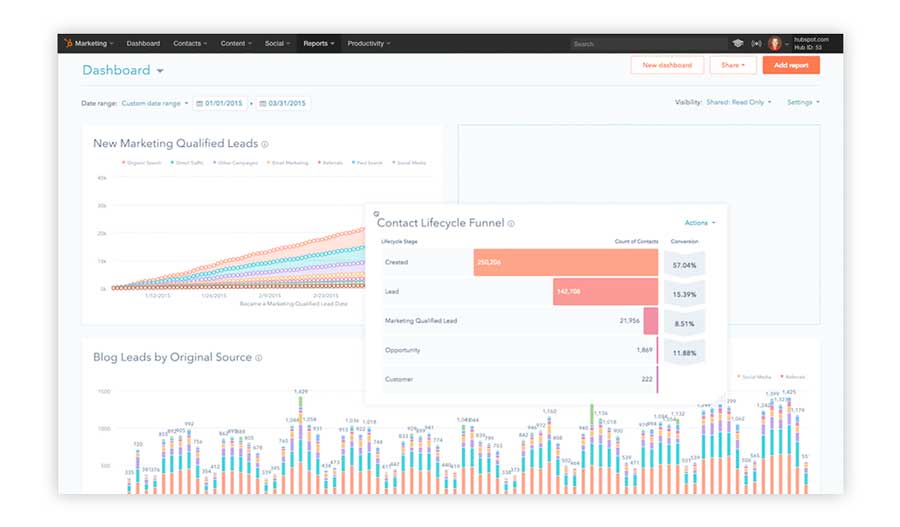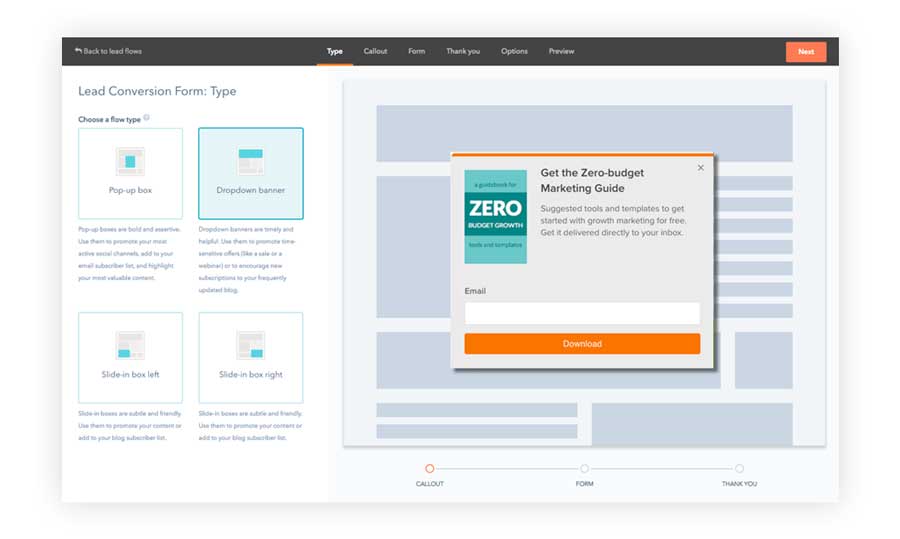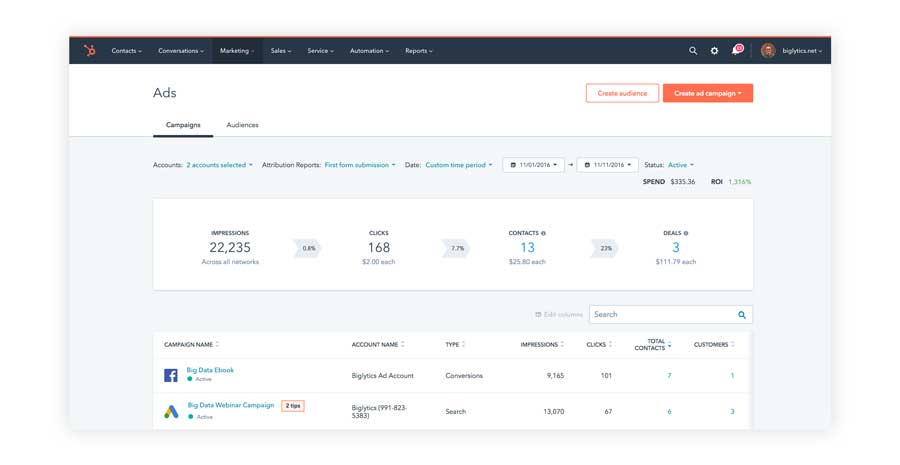5 Free HubSpot Marketing Tools Event Planners Should Be Using
Trying to create an amazing event on a budget? Do you want to use fancy marketing tools without a fancy marketing bank account?
Over 61% of event marketers use event marketing tools. If you can’t afford to blow your cash on tools, you’re doomed, right?
Not necessarily!
HubSpot has a suite of free tools available to marketers across the globe. Sure! They’re not as feature-filled as some of the pay-to-play options, but if you’re looking to make the most of your shoe-string budget, these marketing tools can be a lifesaver for event promoters.
What is HubSpot?
It’s hard to really pin down HubSpot. On the one hand, they sell software (and a recently launched CMS). They have a marketing branch and a sales branch of said software, each with tons of unique software apps.

On the other hand, HubSpot has a massive marketing and sales blog that’s world-renowned for offering tons of free advice and drenching the internet in marketing statistics.
HubSpot has always relied on providing value to drive customers to their products. It’s the reason they invest so heavily in their blog, and it’s the reason that they offer a massive free tier on their software.
They’re banking on you upgrading.
Let’s take this moment to clarify something important. We are in no way affiliated with HubSpot. We like their product. But we aren’t getting paid.
Alright, let’s dive in.
What Do You Mean... “Free”?
We mean free. Freer than an eagle on the 4th of July, and freer than a bird in a Lynyrd Skynyrd song.
What’s the catch?
There isn’t one. HubSpot will hope that you upgrade to a paid account. And they get your email. That’s about it.
Of course, the free version has far fewer features than the paid version (big surprise there), and you’ll probably get bugged about upgrading to the premium tiers. But that’s a small price to pay for free marketing software in today’s tech ecosystem.
Now. Let’s dispell a few myths before we jump into some of HubSpot’s free features. For starters, using HubSpot will not magically make you good at marketing. It’s just a suite of tools.
You still have to put in the legwork and build your buyer’s persona. You still have to create your website. And you still have to practice smart inbound marketing.
Really, HubSpot’s free tools are a nice option to have. They may make your life easier. Over 25% of event marketers are frustrated by the cost of tech. HubSpot may be the Tylenol for your cost-related tech headaches.
What Can I Do With HubSpot’s Free Toolkit?
1. Pop-up Registration Lead Forms
A Free HubSpot Account gives you access to pop-up forms with lead form tracking. After you install the provided tracking code on your website (similar to Facebook’s pixel), you can start automatically collecting lead data when visitors fill out pop-up forms.
Like any form, you can put whatever lead magnet you want behind it or make registering for your event easy and in their face.

Once visitors fill out the form, they will be added as contacts to your HubSpot dashboard. Their information will auto-populate, and you can start tracking behaviors and building lead flows.
You can click on users and see exactly how they first got to your website, what pages they’ve viewed, how many times they’ve visited you, etc.
All of this juicy data is great for building out more complex, sophisticated, and (most importantly) accurate buyer’s journeys and buyer personas to get more event attendees.
2. Free Reports & Data Tools
HubSpot free also comes with an analytics dashboard that lets you push out reports. All of those contacts you’ve accumulated on your dashboard can by hyper-analyzed with reports.
You can add 10 reports to your dashboard, and each report can be customized to show you exactly what you’re looking for.
In other words, leadflow and pop-up forms are the generator and reporting is the lightbulb.
3. Use Integrations For Automation
Want to make HubSpot free a verified lead generator? Integrate it with your email software (choose from MailChimp, AWeber, Campaign Monitor, Constant Contact, and GetResponse) to auto-add contacts to your email software (and vice versa).
You can also integrate with Zapier, Slack, WordPress, Databox, Hotjar, Automate.io, HelloSign, and plenty of other software.
4. Create Ads
HubSpot also lets you connect ad networks (e.g., Facebook, Instagram, LinkedIn, Google, etc.) to your dashboard.
Not only can you control your ads from the dashboard, but HubSpot combined all of that contact data being generated on your website to help you create targeted campaigns using rule-based segmentation.
So, you can target ads to people who have visited certain event pages or are close to purchasing tickets.

Should the person who is visiting your website for the first time receive the same ad as someone who has already spent over 30 minutes on your purchase page?
No!
HubSpot makes segmenting them and targeting them across connected ad networks easy.
5. Email Marketing
This is probably the weakest HubSpot Free Marketing feature. You can do email marketing in HubSpot based on your existing HubSpot contact data. It seems neat (it is in the paid version.)
But there are two big problems.
You can only send 2k emails (which is pretty low), and all the emails have HubSpot branding.
We highly recommend using an email marketing tool and integrating it with HubSpot. Mailchimp will only run you around $50 for 2.5k contacts.
Not only is MailChimp a better email marketing solution, but it won’t “brand” your emails. That’s something you definitely want to be doing yourself.
|
Mailchimp vs Constant Contact Check out our comparison blog between these two popular |








